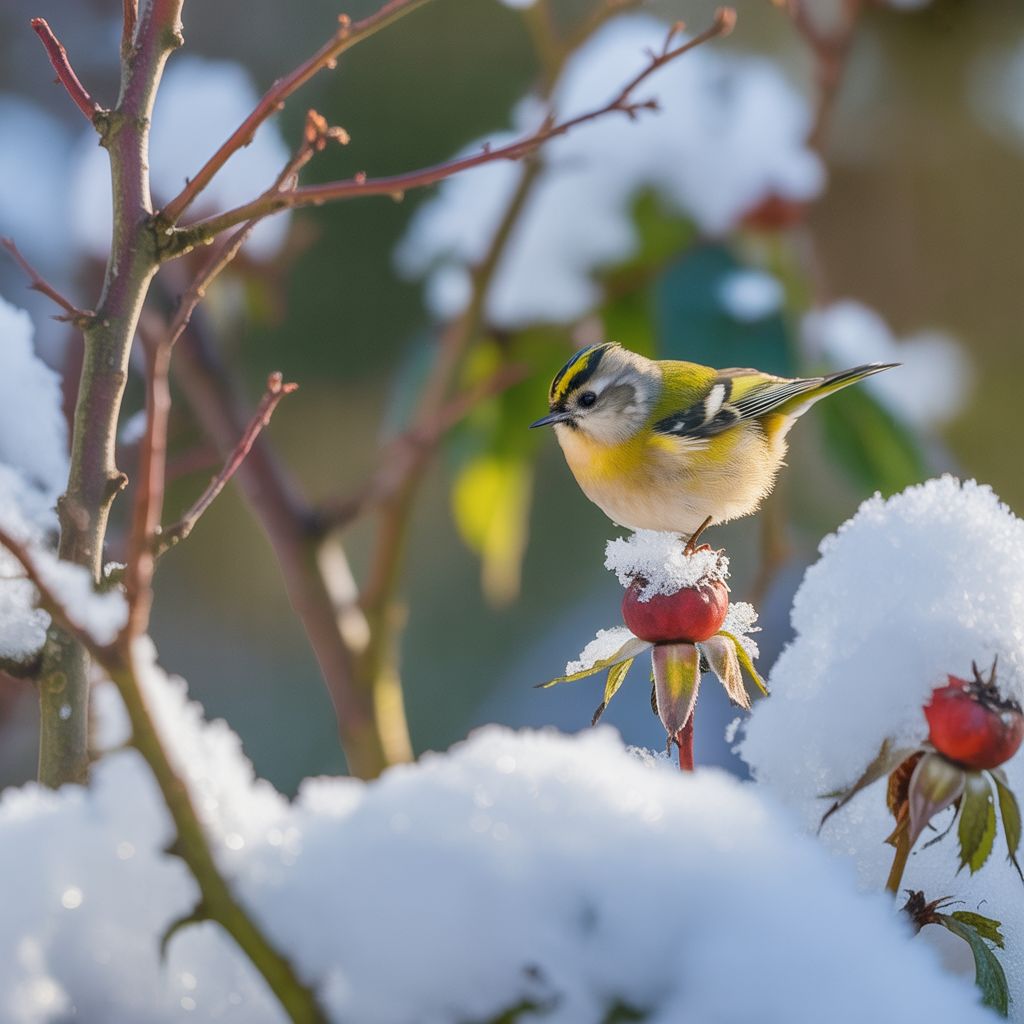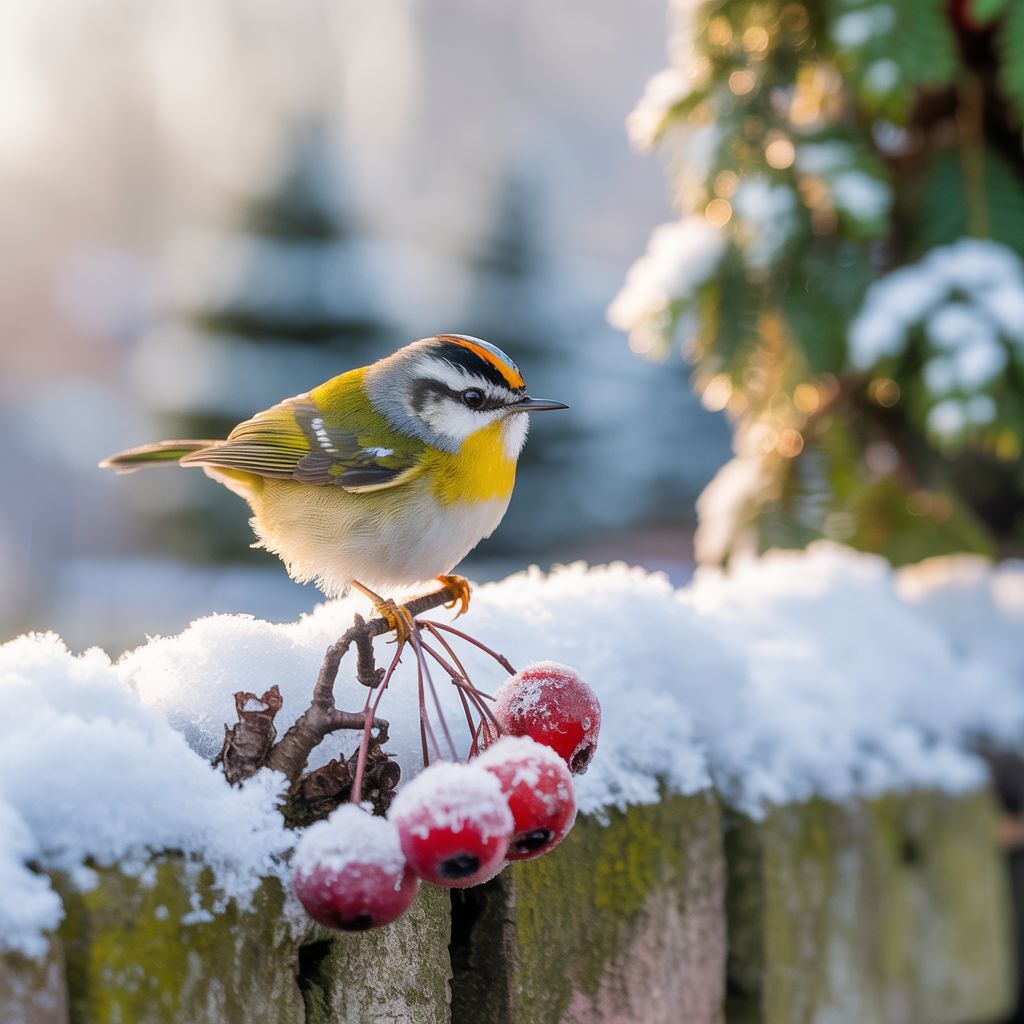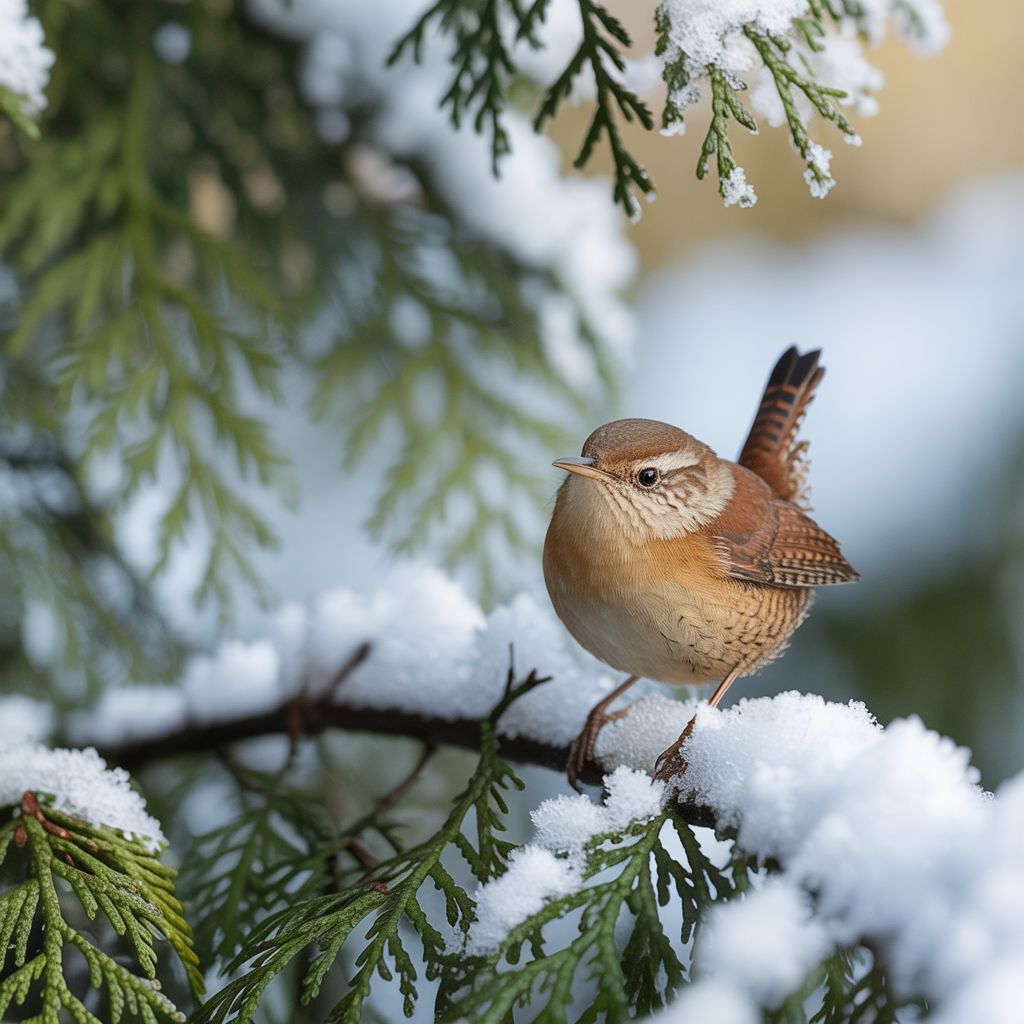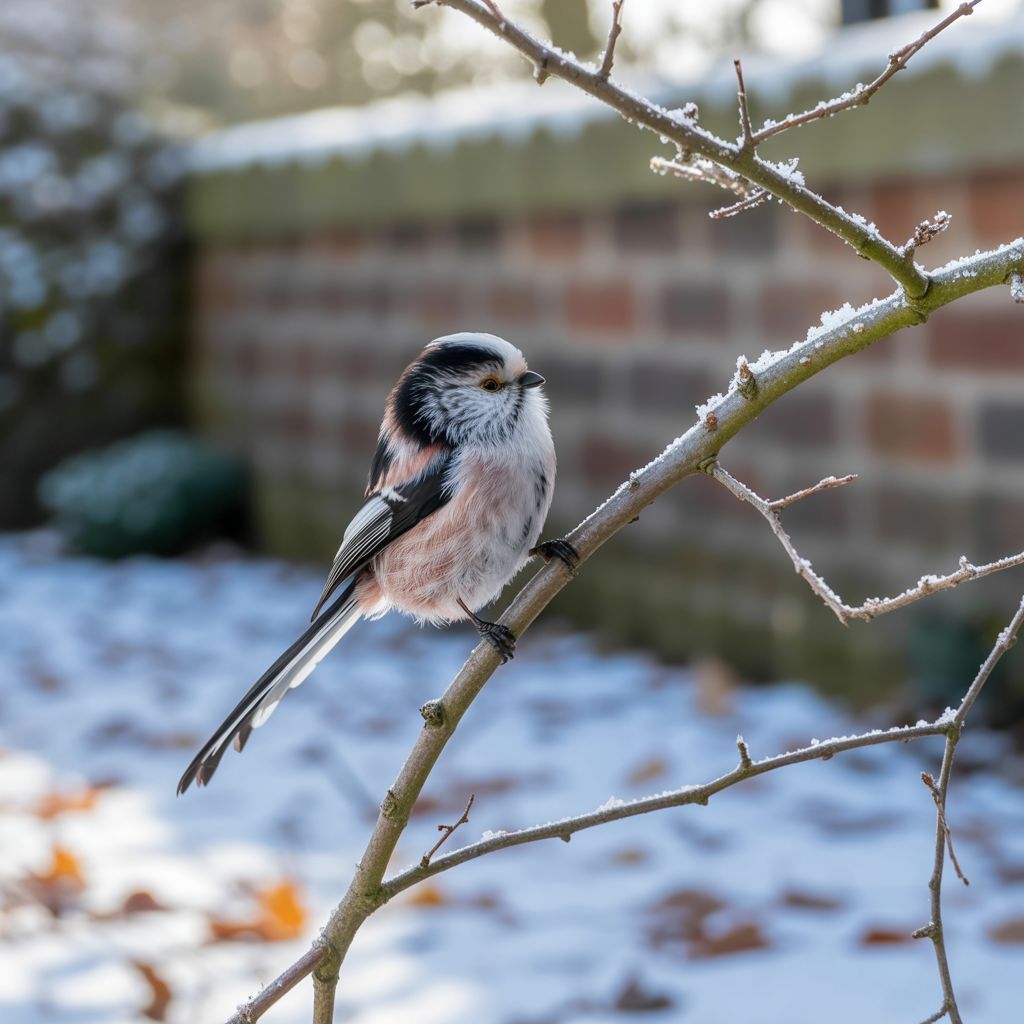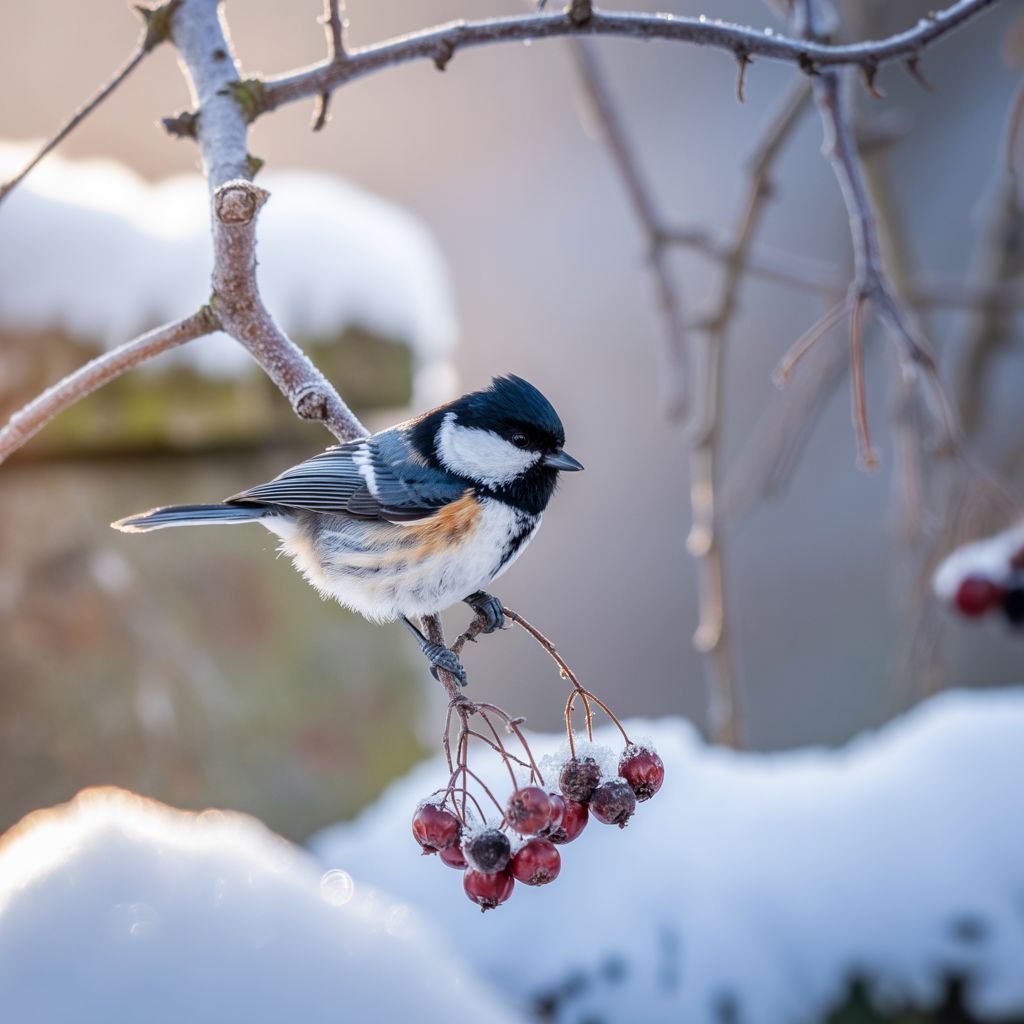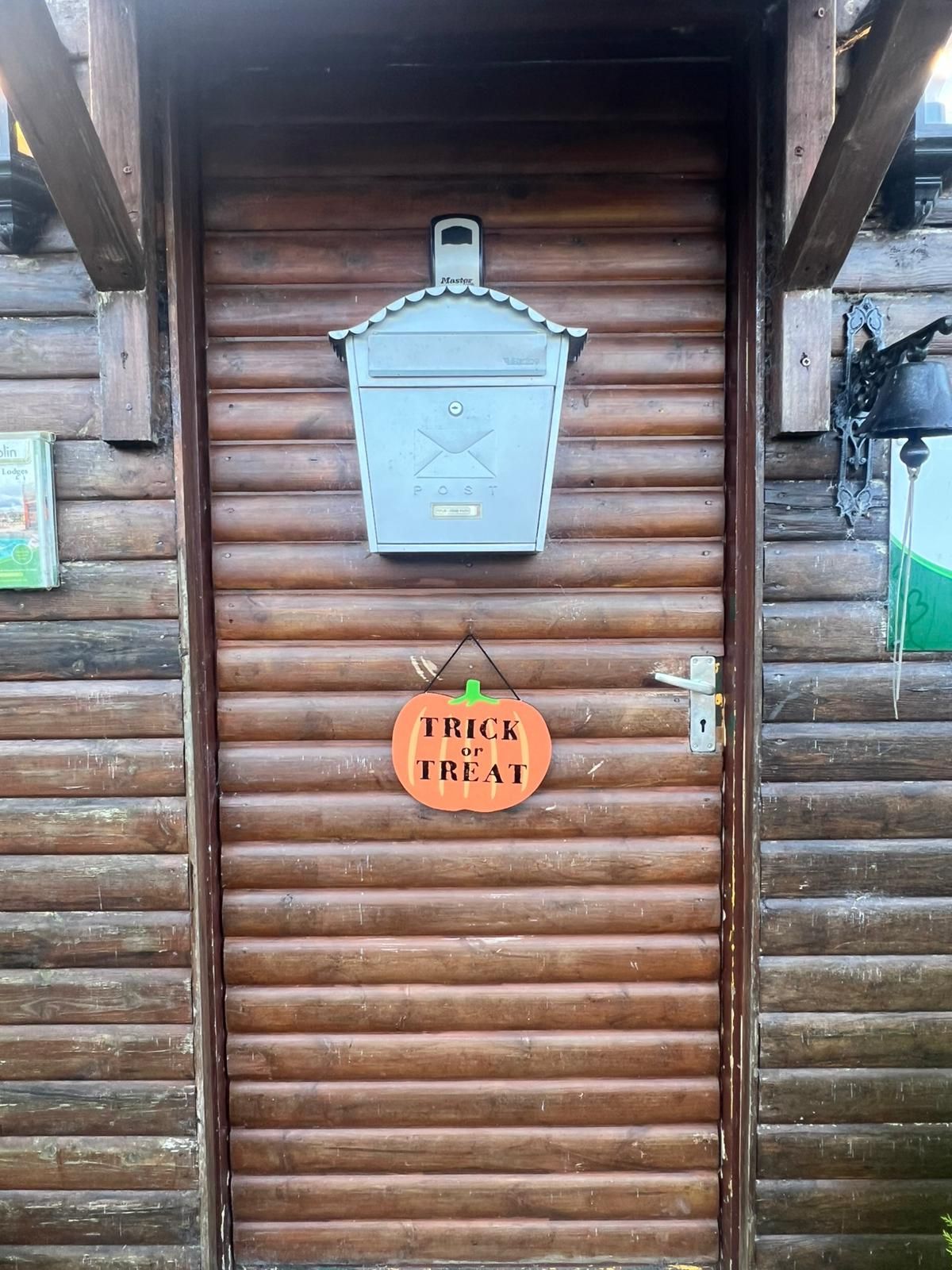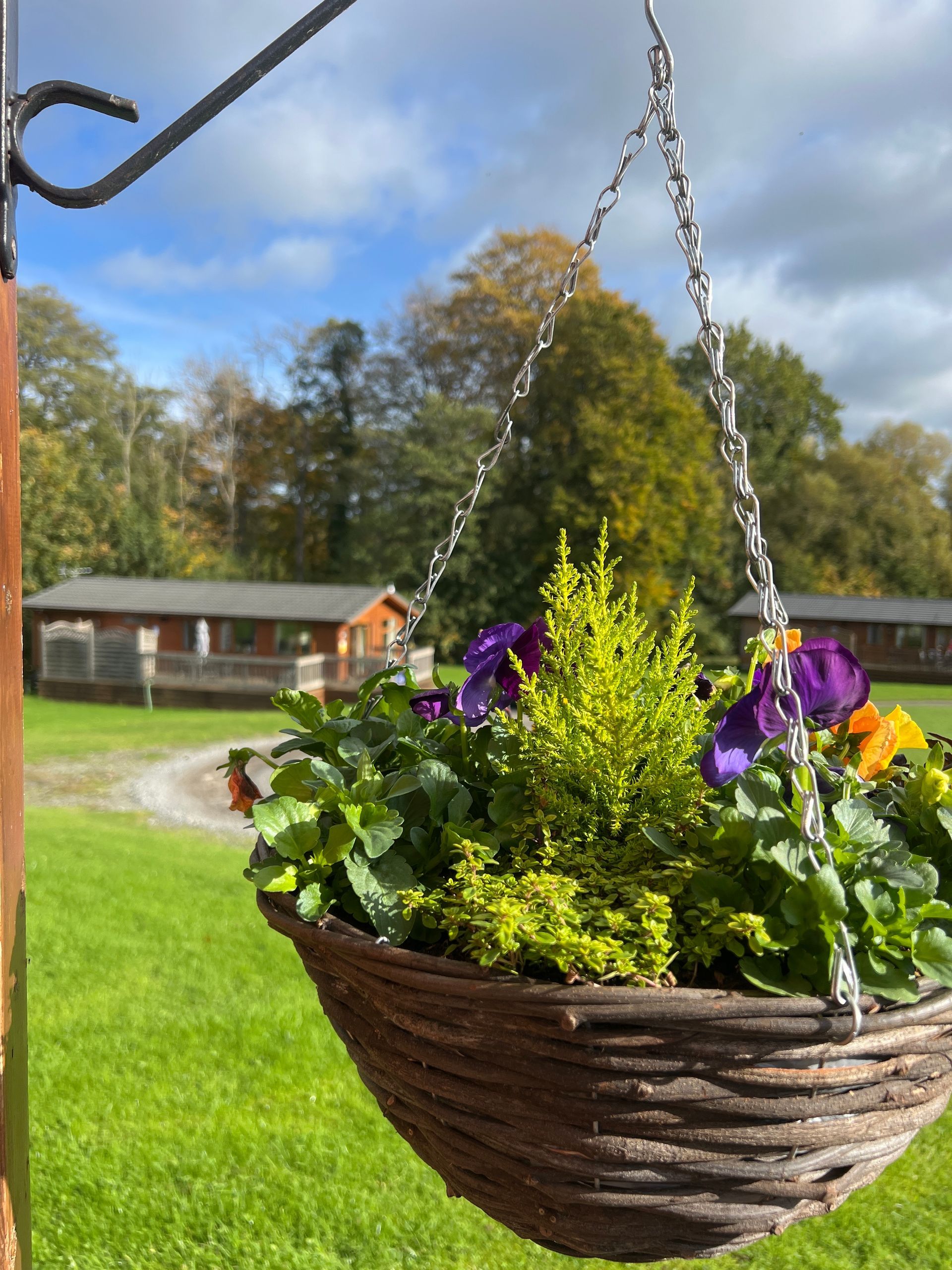The 5-Gram Survivors: Your Complete Guide to Wild English Small Garden Birds

Tuesday morning, 6:15 AM. I'm outside, steaming mug in hand, watching tiny birds on our feeders. Barely larger than my thumb, these miniature marvels weigh less than a £1 coin yet somehow survive Yorkshire's harsh winters. Standing there, watching, it dawns on me that I've just spotted one of England's most remarkable survivors – a bird so small it defies belief.
Welcome to the extraordinary world of England's tiniest garden birds, where survival isn't just about size – it's about being perfectly engineered for life on the edge.
The Magnificent Miniatures: England's Smallest Garden Birds
When we talk about small garden birds, we're entering a realm where every gram matters. These feathered athletes pack incredible survival skills into bodies that often weigh less than a teaspoon of sugar.
1. Goldcrest (Regulus regulus) - The Featherweight Champion
- Weight: 5-7 grams
- Length: 9cm
- Wingspan: 14-15cm
The Goldcrest holds the crown as Britain's smallest bird. At just 5 grams – the same weight as a 20p coin – this olive-green beauty sports a distinctive yellow crest bordered by black stripes.
- Where to spot them: Coniferous woodlands, mixed forests, parks, and gardens with evergreen trees.
- What they eat: Spiders, moth eggs, caterpillars, and tiny flies picked from between pine needles. They'll also visit suet feeders.
- Survival secret: Their tiny beaks allow them to access food sources other birds cannot reach.
2. Firecrest (Regulus ignicapilla) - The Rare Gem
- Weight: 5-7 grams
- Length: 9cm
- Wingspan: 14-15cm
Often confused with the Goldcrest, the Firecrest is distinguished by its brighter orange crest and distinctive black eye stripes. With only 2,000 breeding territories in the UK, spotting one is a genuine treat.
- Where to spot them: Primarily southern England, in coniferous and mixed woodlands.
- What they eat: A Similar diet to Goldcrests, tiny invertebrates and insects.
- Identification tip: Listen for their song. Firecrests are generally louder than Goldcrests, despite their tiny size.
3. Wren (Troglodytes troglodytes) - The Mighty Mouse
- Weight: 7-12 grams
- Length: 9cm
- Wingspan: 16-18cm
Don't let the Wren's brown, mouse-like appearance fool you. This is Britain's most common breeding bird, with an estimated 11 million pairs.
- Where to spot them: Everywhere – woodlands, farmland, heathland, coastal cliffs, gardens, cities, and towns.
- What they eat: Small invertebrates, spiders, and insects foraged from dense vegetation.
- Fantastic fact: Despite weighing less than 12 grams, Wrens produce one of the loudest songs of any British bird relative to their size.
4. Long-tailed Tit (Aegithalos caudatus) - The Fluffy Acrobat
- Weight: 7-10 grams
- Length: 14cm (but half of that is tail!)
- Wingspan: 16-19cm
These adorable pink and white fluffballs are impossible to mistake. Their tail is longer than their body, giving them a distinctive appearance as they bounce through hedgerows in chattering flocks.
- Where to spot them: Mixed woodland, farmland, parks, and gardens.
- What they eat: Insects, spiders, and seeds. They're frequent visitors to bird feeders and love fat balls.
- Social behaviour: Highly gregarious – if you see one, you'll likely see several more following behind.
5. Coal Tit (Periparus ater) - The Conifer Specialist
- Weight: 8-10 grams
- Length: 11.5cm
- Wingspan: 17-20cm
Easily identified by their glossy black cap, white cheeks, and distinctive white patch on the back of their head, Coal Tits are perfectly adapted for life in coniferous forests.
- Where to spot them: Coniferous woodlands, gardens, parks, and heathland.
- What they eat: Small insects, spiders, seeds, and berries. Regular visitors to bird feeders.
- Clever behaviour: They hoard food for later but often forget where they've hidden it, making them frequent feeder visitors.
How These Tiny Birds Survive Against All Odds
The Energy Challenge
Imagine needing to eat 30% of your body weight every single day to survive. That's the reality for these miniature marvels. Their high surface-area-to-volume ratio means they lose heat rapidly, requiring constant refuelling.
Winter Survival Strategies
- Fluffing up: Birds can increase their insulation by up to 30% by fluffing their feathers, trapping warm air close to their bodies.
- Communal roosting: Long-tailed Tits huddle together in groups of up to 20 birds, sharing body heat through the coldest nights.
- Constant movement: Wrens and Goldcrests rarely stop moving during daylight hours, maintaining their metabolism through activity.
Feeding Adaptations
Each species has evolved specific feeding strategies:
- Goldcrests and Firecrests: Ultra-fine beaks for extracting insects from pine needles
- Wrens: Ground-foraging specialists with excellent camouflage
- Coal Tits: Smaller beaks than other tits, perfect for conifer feeding
- Long-tailed Tits: Cooperative feeding, sharing food sources with flock members
Creating a Small Bird Paradise in Your Garden
Essential Food Sources
- Suet feeders: Perfect for Goldcrests, Firecrests, and Long-tailed Tits. The high-fat content provides essential energy.
- Mealworms: Fresh or dried mealworms are irresistible to Wrens and provide crucial protein.
- Fine seeds: Niger seeds and small sunflower hearts suit tiny beaks perfectly.
- Fat balls: Especially popular with Long-tailed Tits and Coal Tits during winter months.
Garden Design for Small Birds
- Dense shrubs: Plant native shrubs like hawthorn, blackthorn, and elder to provide nesting sites and insect habitat.
- Evergreen trees: Conifers offer year-round shelter and feeding opportunities for Goldcrests and Coal Tits.
- Water features: Shallow water sources are essential – these tiny birds need frequent drinks but can't manage deep water.
- Avoid pesticides: Chemical treatments eliminate the insects these birds depend on for survival.
Seasonal Considerations
- Spring (March-May): Provide nesting materials like moss, animal hair, and small twigs. Long-tailed Tits create elaborate nests using spider webs that can expand as chicks grow.
- Summer (June-August): Maintain water sources and continue feeding – parent birds need extra energy to feed their young.
- Autumn (September-November): Increase high-energy foods as birds prepare for winter. This is when you're most likely to see mixed flocks.
- Winter (December-February): Critical feeding period. Consistent food supplies can mean the difference between life and death for these tiny birds.
Identification Made Simple
Quick Reference Guide
- Goldcrest: Yellow crest, olive-green body, no eye stripe
- Firecrest: Orange crest, black eye stripe, cleaner colour contrasts
- Wren: All brown, round body, upright tail, mouse-like movement
- Long-tailed Tit: Pink and white, tail longer than body, travels in flocks
- Coal Tit: Black cap, white cheeks, white patch on nape
Behavioural Clues
- Goldcrests and Firecrests: Constantly moving through the tree canopy, rarely still
- Wrens: Ground-level movement, secretive, surprisingly loud song
- Long-tailed Tits: Gregarious, bouncy flight pattern, follow-the-leader movement
- Coal Tits: Acrobatic at feeders, frequent visitors, cache food
Conservation Status and Threats
While most of these species maintain stable populations, they face increasing challenges:
- Climate change: Shifting weather patterns affect insect availability and breeding success.
- Habitat loss: Urban development reduces suitable nesting and feeding areas.
- Garden chemicals: Pesticides and herbicides eliminate essential food sources.
- Cat predation: Domestic cats pose a significant threat to ground-feeding species like Wrens.
- Window strikes: Glass surfaces cause numerous casualties among these fast-moving birds.
The Magic of Small Bird Watching
There's something uniquely rewarding about attracting these tiny visitors to your garden. Unlike larger, more obvious species, spotting a Goldcrest or watching a flock of Long-tailed Tits requires patience and attention to detail.
- Best viewing times: Early morning (6-9 AM) and late afternoon (3-6 PM) when birds are most active.
- Equipment needed: A basic pair of binoculars (8x32 or 10x42) will reveal details invisible to the naked eye.
- Patience pays: These birds move quickly, but regular feeding will establish patterns you can predict.
Seasonal Spectacles to Watch For
- Spring migration: Firecrests arrive from continental Europe, often appearing in unexpected locations.
- Summer breeding: Watch for parent birds carrying insects to hidden nests.
- Autumn flocking: Mixed species flocks roam gardens, offering multiple species in single viewing sessions.
- Winter survival: Observe the remarkable resilience as these tiny birds endure harsh conditions.
Your Role in Their Survival
Every garden can become a lifeline for these remarkable birds. By providing consistent food sources, clean water, and suitable habitat, you're contributing to conservation efforts that span the entire country.
- Start small: Even a single suet feeder can attract multiple species.
- Be consistent: Regular feeding is more valuable than sporadic abundance.
- Think long-term: Native plants provide sustainable food sources for years to come.
- Share your observations: Citizen science projects like the RSPB Big Garden Birdwatch rely on garden bird watchers.
The next time you see a tiny bird darting through your garden, remember – you're witnessing one of nature's most remarkable survival stories. These 5-gram survivors prove that in the natural world, size isn't everything. It's about being perfectly adapted to your niche, and these miniature marvels have mastered theirs.
From our 17 acre lodge holiday site in Yorkshire and across England, these tiny titans continue to amaze, inspire, and remind us that the smallest creatures often have the most significant impact on our daily lives.

